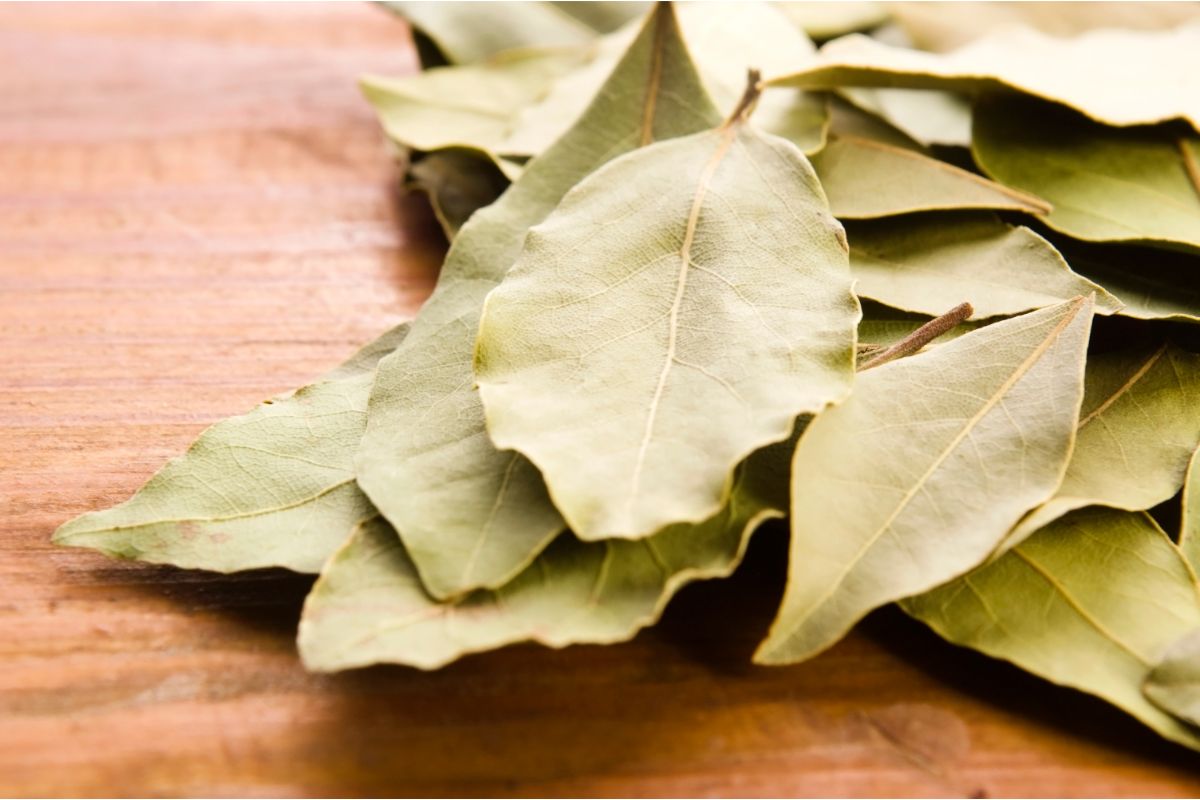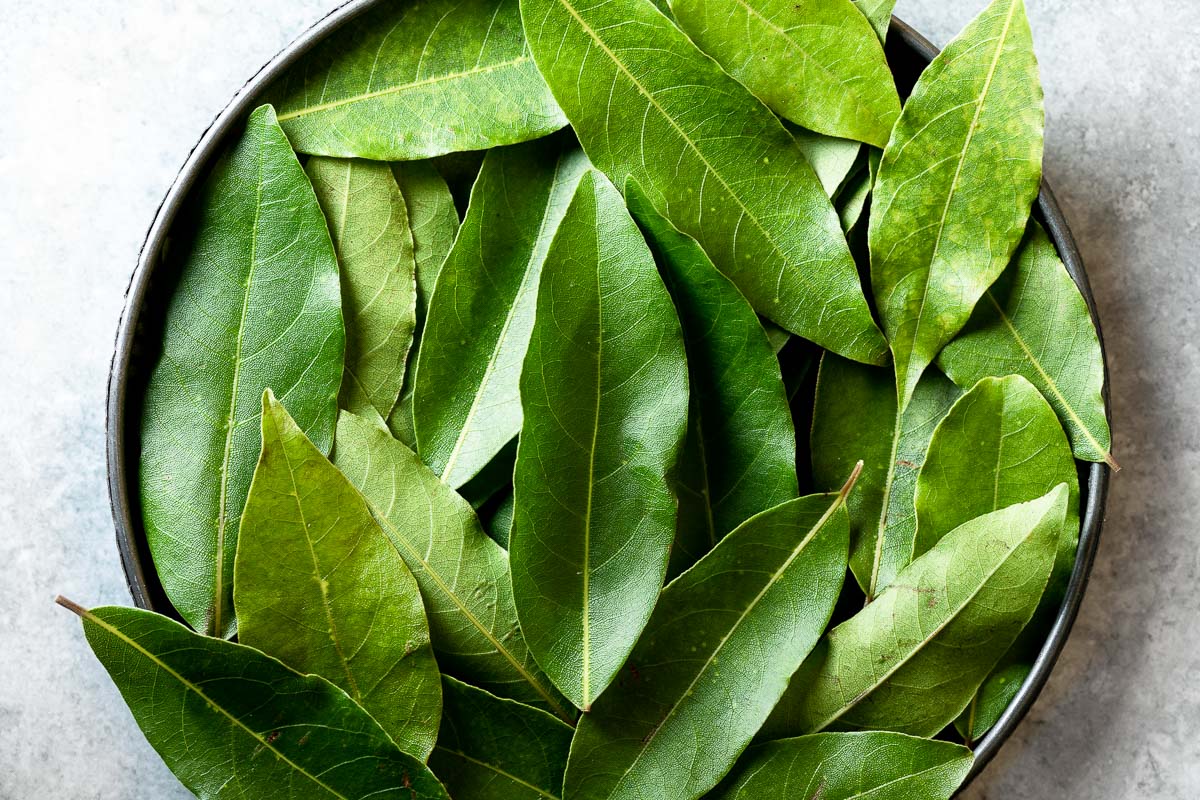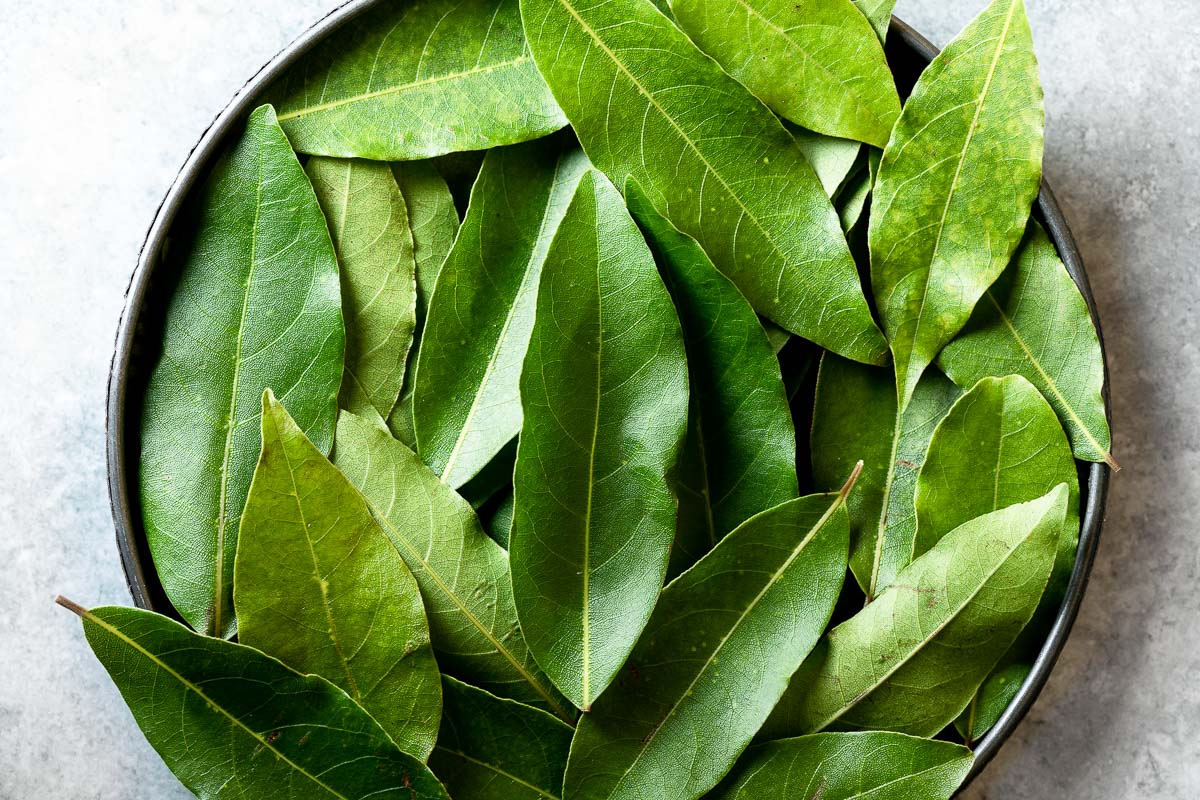How to Achieve Great Flavor with Bay Leaf Alternatives – the question often arises when a pantry is bare or a recipe calls for a specific flavor that bay leaves can’t provide. Bay leaves, with their distinctive aroma and subtle bitterness, have long been a staple in kitchens worldwide, adding depth and complexity to countless dishes.
But what happens when you find yourself without this culinary essential? Fear not, for the world of herbs and spices offers a treasure trove of alternatives, each with its unique flavor profile and culinary potential.
This article will delve into the fascinating world of bay leaf alternatives, exploring their distinct flavors, common applications, and tips for effective use. We’ll examine the nuances of each alternative, helping you choose the perfect substitute for your culinary creations.
From the bright citrus notes of lemon verbena to the earthy warmth of rosemary, we’ll unveil a range of options that will elevate your dishes and inspire your creativity.
Understanding Bay Leaf Flavor

Bay leaves are a staple ingredient in many cuisines worldwide, adding a distinctive aroma and flavor to dishes. Their unique flavor profile, characterized by a combination of herbal, slightly bitter, and slightly camphoraceous notes, sets them apart from other herbs and spices.
Bay Leaves in Cuisines, How to Achieve Great Flavor with Bay Leaf Alternatives
Bay leaves are commonly used in various cuisines, playing a significant role in imparting depth and complexity to dishes. They are often used whole, adding their flavor subtly over time. Their versatility allows them to be incorporated into a wide range of dishes, from savory stews and soups to aromatic sauces and marinades.
While exploring alternatives to bay leaves for culinary purposes, you might stumble upon the intriguing world of botanicals. Just as bay leaves lend their earthy aroma to savory dishes, the delicate columbine plant, with its intricate blooms, adds a touch of whimsy to any garden.
For tips on cultivating this stunning flower, be sure to check out Columbine Plants: Essential Tips for Beautiful Blooms. Returning to the culinary realm, remember that experimentation is key when discovering new flavor profiles.
- Mediterranean Cuisine:Bay leaves are a fundamental ingredient in Mediterranean cooking, often used in dishes like Greek moussaka, Spanish paella, and Italian tomato sauces. They contribute a distinctive earthy and slightly bitter note that complements the other flavors in these dishes.
- French Cuisine:In French cuisine, bay leaves are essential for classic dishes like bouillabaisse, a Provençal fish stew, and coq au vin, a chicken stew. They add a subtle herbal complexity that enhances the richness of these dishes.
- Indian Cuisine:While not as common as in other cuisines, bay leaves are used in some Indian dishes, particularly those from the southern region. They add a subtle aroma and a hint of bitterness to curries and stews.
Examples of Dishes with Bay Leaves
Bay leaves are commonly used in a wide variety of dishes, adding their distinctive flavor and aroma to enhance the overall taste. Here are some examples:
- Soups and Stews:Bay leaves are frequently used in soups and stews, such as beef stew, vegetable soup, and lentil soup. They add a subtle herbal depth and complexity to these dishes.
- Sauces:Bay leaves are often used in sauces, particularly those made with tomatoes, such as marinara sauce and tomato sauce. They add a subtle bitterness and a touch of camphor to these sauces, enhancing their flavor profile.
- Roasted Meats:Bay leaves are sometimes added to roasted meats, such as pork roast and lamb roast. They add a subtle herbal aroma and flavor to the meat during the roasting process.
- Pickles and Relishes:Bay leaves are sometimes used in pickles and relishes, adding a distinctive aroma and flavor to these preserved foods.
Bay Leaf Alternatives
While the bay leaf reigns supreme in many culinary traditions, its distinct flavor can be intimidating for some cooks. Fortunately, a diverse range of herbs and spices can offer similar flavor profiles, allowing you to experiment and find your perfect match.
This comprehensive overview explores the nuances of bay leaf alternatives, providing insights into their flavor profiles, applications, and tips for use.
Bay Leaf Alternatives: A Comprehensive Overview
Bay leaf alternatives offer a wide spectrum of flavors, allowing you to tailor your dishes to your preferences. The following table provides a detailed overview of popular alternatives, their flavor profiles, culinary applications, and tips for use.
Alternative |
Flavor Profile |
Applications |
Tips for Use |
|---|---|---|---|
Rosemary |
Earthy, slightly bitter, with hints of pine and camphor |
Roasted meats, stews, soups, bread, marinades |
Use fresh or dried rosemary, adding it towards the end of cooking to retain its aromatic qualities. |
Thyme |
Woody, slightly minty, with notes of lemon and earthiness |
Poultry, fish, vegetables, sauces, soups, stews |
Use fresh or dried thyme, adding it during the cooking process to infuse its flavor. |
Sage |
Savory, slightly bitter, with notes of pine and earthiness |
Stuffings, poultry, sausages, pasta dishes, sauces |
Use fresh or dried sage, adding it towards the end of cooking to preserve its flavor. |
Marjoram |
Sweet, slightly peppery, with notes of oregano and thyme |
Chicken, lamb, vegetables, soups, stews, sauces |
Use fresh or dried marjoram, adding it during the cooking process to infuse its flavor. |
Oregano |
Earthy, slightly bitter, with notes of mint and pepper |
Italian dishes, pizza, tomato sauces, meat dishes, soups |
Use fresh or dried oregano, adding it during the cooking process to infuse its flavor. |
Tarragon |
Anise-like, slightly licorice, with notes of mint and lemon |
Fish, chicken, eggs, sauces, salads, soups |
Use fresh or dried tarragon, adding it towards the end of cooking to retain its delicate flavor. |
Lovage |
Celery-like, with hints of parsley and a touch of licorice |
Soups, stews, sauces, salads, vegetables |
Use fresh or dried lovage, adding it during the cooking process to infuse its flavor. |
Allspice |
Warm, spicy, with notes of cinnamon, nutmeg, and cloves |
Pickles, stews, soups, baked goods, meat dishes |
Use whole or ground allspice, adding it during the cooking process to infuse its flavor. |
Black Peppercorns |
Spicy, pungent, with a slightly bitter aftertaste |
Meat dishes, vegetables, sauces, soups, stews |
Use whole or ground black peppercorns, adding them during the cooking process to infuse their flavor. |
Flavor Enhancement Techniques

Mastering the art of using bay leaf alternatives effectively requires understanding how different cooking methods and techniques can influence their flavor profiles. By embracing these techniques, you can elevate your dishes to new heights of culinary excellence.
Cooking Methods and Their Impact
Different cooking methods can significantly impact the flavor of bay leaf alternatives. Some alternatives, like thyme and rosemary, release their aromas more readily during simmering or braising, while others, like allspice berries, might benefit from being toasted before use. Understanding how each alternative responds to different cooking methods is crucial for achieving optimal flavor.
- Simmering:This method is ideal for extracting the delicate flavors of herbs like thyme, rosemary, and sage, allowing them to infuse the dish gradually.
- Braising:Similar to simmering, braising allows for prolonged cooking, extracting the full flavor potential of bay leaf alternatives while creating a rich and flavorful sauce.
- Sautéing:This method works well for releasing the aromatic compounds of spices like allspice berries and cloves, adding a burst of flavor to dishes.
- Roasting:Roasting can enhance the flavor of herbs like oregano and marjoram, bringing out their earthy and slightly bitter notes.
Recipes Showcasing Bay Leaf Alternatives
Numerous recipes showcase the versatility and effectiveness of bay leaf substitutes. Here are a few examples:
- Tomato-Based Soups:Replace bay leaves with a combination of thyme and rosemary for a fragrant and herbaceous soup.
- Stews and Braises:Use allspice berries and cloves in combination with other spices for a warm and complex flavor profile.
- Roasted Vegetables:Add a pinch of oregano or marjoram to roasted vegetables for a touch of earthy depth.
- Seafood Dishes:Substitute bay leaves with a sprig of tarragon or fennel for a subtle and refreshing flavor.
Experimenting with Flavor Combinations
Once you’ve selected your bay leaf alternative, it’s time to get creative with flavor combinations. The beauty of culinary exploration lies in discovering unexpected harmonies. By pairing your chosen alternative with other ingredients, you can elevate your dishes to new heights of deliciousness.
When exploring culinary alternatives, consider the fragrant possibilities of rosemary, thyme, or even sage. These herbs can bring a similar depth of flavor to your dishes as bay leaves, adding a touch of complexity and warmth. For a touch of visual beauty, consider adding a few sprigs of rosemary to your dishes, similar to how you might incorporate the vibrant foliage of Rodgers plants to elevate your home décor.
The earthy notes of rosemary, much like the striking presence of Rodgers plants, create a captivating sensory experience. Just remember to adjust the cooking time to ensure your chosen alternative reaches its full potential, and enjoy the symphony of flavors that await.
Flavor Combinations with Bay Leaf Alternatives
The following table showcases some creative pairings of bay leaf alternatives with other ingredients, offering a starting point for your culinary adventures. Experiment with these suggestions, adjust quantities to your taste, and discover your own unique flavor profiles.
Dish |
Bay Leaf Alternative |
Flavor Combination |
|---|---|---|
Tomato-based sauces |
Rosemary |
The herbaceous notes of rosemary complement the acidity of tomatoes, adding a warm, earthy dimension. |
Roasted vegetables |
Thyme |
Thyme’s earthy and slightly lemony character enhances the natural sweetness of roasted vegetables, especially root vegetables. |
Stews and soups |
Sage |
Sage’s earthy, slightly peppery flavor adds depth and complexity to hearty stews and soups. It pairs well with hearty meats and root vegetables. |
Chicken dishes |
Marjoram |
Marjoram’s delicate, slightly sweet flavor complements chicken beautifully, especially in Mediterranean-inspired dishes. |
Fish dishes |
Tarragon |
Tarragon’s anise-like flavor adds a subtle complexity to fish dishes, particularly those with a lighter sauce or lemon accents. |
Visual Representation of Bay Leaf Alternatives
A visual guide can be incredibly helpful when exploring bay leaf alternatives, as it allows you to easily compare the physical characteristics of each option. This visual representation can aid in identifying the right alternative for your specific culinary needs.
Visual Guide to Bay Leaf Alternatives
Here is a visual guide showcasing the appearance and characteristics of various bay leaf alternatives:
- Dried Thyme:This alternative, originating from the Mediterranean region, features small, needle-like leaves with a pungent aroma. Its color ranges from green to dark green, with a subtle hint of gray.
- Dried Rosemary:Native to the Mediterranean, rosemary is known for its long, narrow leaves with a deep green color. Its aroma is distinct and slightly bitter, with a hint of pine.
- Dried Oregano:This alternative, also originating from the Mediterranean, has small, oval-shaped leaves with a dark green color. Its aroma is strong and earthy, with a hint of citrus.
- Dried Marjoram:This alternative, similar to oregano, features small, oval-shaped leaves with a light green color. Its aroma is mild and slightly sweet, with a hint of citrus.
- Dried Sage:Native to the Mediterranean, sage is characterized by its large, oval-shaped leaves with a grayish-green color. Its aroma is strong and slightly bitter, with a hint of camphor.
Last Word: How To Achieve Great Flavor With Bay Leaf Alternatives
By exploring the world of bay leaf alternatives, you unlock a universe of culinary possibilities, adding depth, complexity, and a touch of magic to your dishes. Experiment with different combinations, embrace the unexpected, and let your creativity flourish. Remember, the best recipes are often born from a spirit of adventure and a willingness to try new things.
So, the next time you’re looking for a way to elevate your culinary game, consider the power of bay leaf alternatives. You might just discover your new favorite flavor combination!
Detailed FAQs
What are some common bay leaf alternatives?
Some common bay leaf alternatives include rosemary, thyme, oregano, sage, and lemon verbena.
How do I know which alternative to use?
The best alternative depends on the dish and the desired flavor profile. Consider the specific flavors you want to enhance and choose an alternative that complements those flavors.
Can I use multiple alternatives together?
Yes, you can use multiple alternatives together to create a complex and layered flavor. Experiment with different combinations to find what works best for you.
Where can I find bay leaf alternatives?
Bay leaf alternatives are widely available at grocery stores, specialty food markets, and online retailers.
